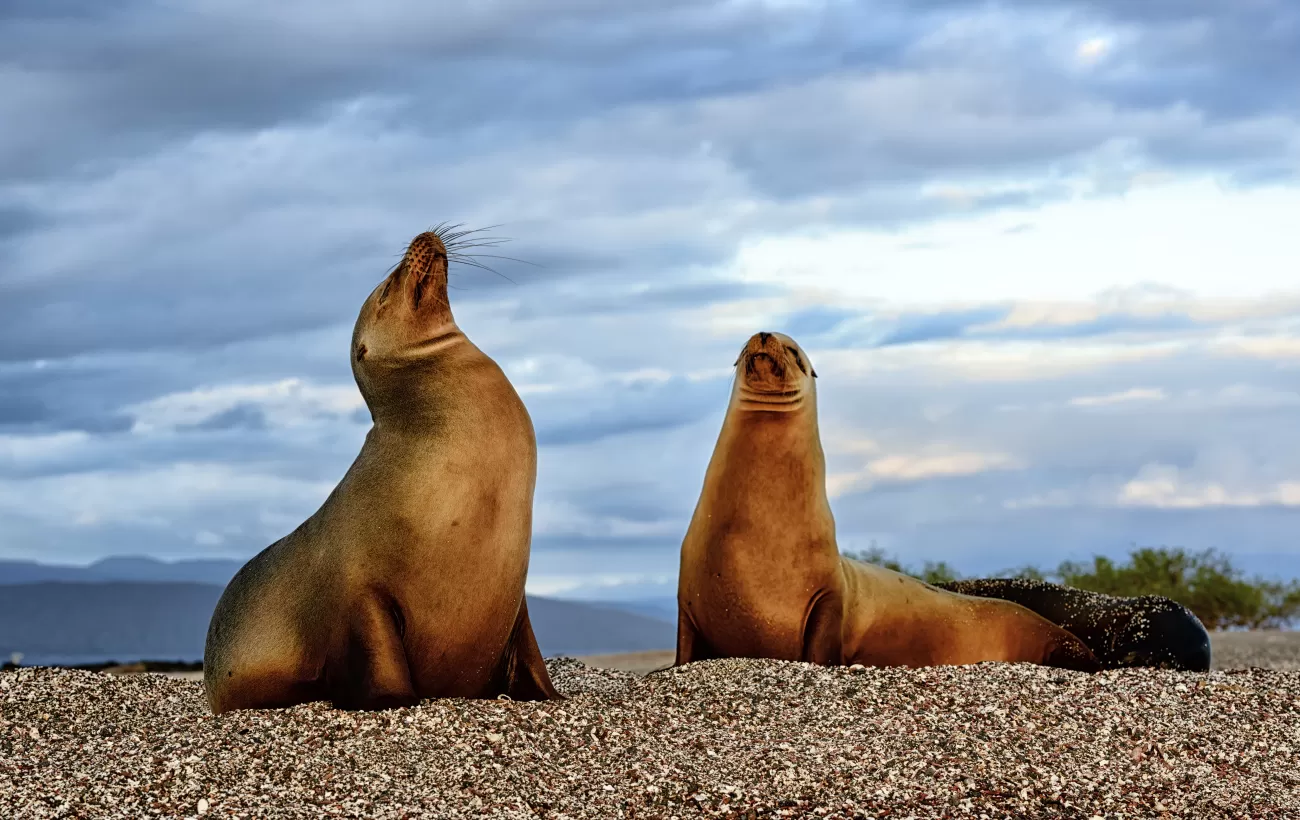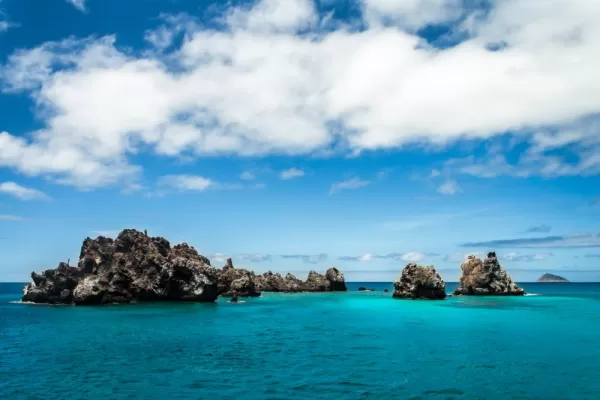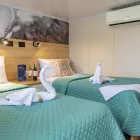Punta Cormorant is located in the north of Floreana and it is known for its large coastal lagoon with American flamingos, white-cheeked pintails, black-necked stilts and other shorebirds. There is a beautiful white sand beach which is an important nesting ground for green sea turtles where you can also see rays and reef sharks. In recent years, a small group of blue footed boobies have started to breed right by the trail. This is also a great trail to look at endemic plants.
Snorkel: It will be done at Devil’s Crown, a heavily eroded little volcano right by Floreana island. This is considered by many as one of the best snorkeling sites in the entire archipelago as the current funnels plankton through the Crown, attracting huge schools of snapper, Creole fish parrot fish, angelfish, reef sharks, sea turtles, rays and a phenomenal amount of marine life.
Highlights: American flamingo, blue-footed booby, frigatebirds, tropicbirds, Galapagos shearwaters, sea lions, sea turtle nesting site, finches, shorebirds, coral-sand beach.
Trail: 1.6 km / 1 mi
Level: Easy
Wet landing, Hiking, Snorkeling, and Panga ride
Floreana is famous for the tales of German settlers and the baroness during the late 1920’s and 30 ‘s. Assassinations, disappearances and other unsolved mysteries are the ingredients of this fascinating story. Post office bay was often used by whalers to anchor their ships and go up to the highlands to get freshwater and tortoises. Most boats visiting the Galapagos had to come to this place sooner or later, so a system of mail was established more than 200 years ago: a barrel near the beach became the way to leave messages to other ships and also to the outside world. This mail system is still in use and will allow you to send postcards from the Galapagos to the outside world. Aside from a small beautiful beach and a lava tunnel, the area is great for dinghy tours to look for sea lions, green sea turtles, shorebirds, small sharks and, with some luck, Galapagos penguins.
Snorkel: There is great snorkel from the beach, as you can see lots of sea turtles, rays, great diversity of fish and, if you are really lucky, Galapagos penguin.
Highlights: Sea Lions, sea turtles, finches, shorebirds, marine iguanas, penguins.
Trail: 0.7 m / 0.4 mi
Level: Easy
Wet landing, Hiking, and Snorkeling

















